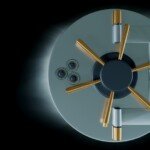Basic Guide to CNC MIST Collectors: Protecting People, Performance, and Accuracy
In the fast-paced world of CNC machining, metal shavings fly around, cutting liquid flows relentlessly – hidden challenges often cast the air: mist. As a professional five-axis CNC machining manufacturer, like Greatlime, we know that reaching peak performance is not just about advanced equipment (such as our high-precision five-axis machine) or cutting-edge production technology. It is also about maintaining a safe, clean and efficient working environment. This is where the CNC fog collector becomes unnegotiable.
This guide dives into the fundamentals of mist collection – why it is crucial, how it works and how to choose the right solution for your store. Let’s clear the air.
What exactly is CNC processing fog?
During CNC operations such as milling, turning or grinding, use cutting fluid (coolant or lubricant) to reduce heat, improve finish and extend tool life. High-speed processing and stirring of these liquids produces a fine aerosol suspension of oil or coolant droplets in the air. This is fog. Unlike visible smoke or coarse debris, mist particles can be small (usually submicrons), lingering in the air for hours and seeping into every corner of the workspace.
Why is fog collectors essential? Ignore the risk of fog
A situation without proper fog control is not only messy, but also dangerous and counterproductive:
- Health and safety hazards: Inhaling oil mist can cause respiratory problems (asthma, bronchitis) and skin/eye irritation. Some cutting fluids contain additives related to long-term health risks. Regulators like OSHA enforce strict exposure restrictions.
- Environmental damage: The fog is positioned on the floor, machines and walls, creating slippery surfaces (risk of falling) and contaminating other work areas. Uncontrolled mist exhaust can violate environmental regulations.
- Machine shutdown and damage: Accumulated mist coating sensitive machine components (controllers, sensors, guides), resulting in corrosion, electrical failures and premature wear. It also contaminates lubricant.
- Product quality issues: During inspection, mist positioning on parts or fixtures can damage surface treatment or measurement accuracy.
- Workers’ morale and productivity: A mist-filled store is unpleasant, reducing visibility and causing discomfort, affecting operator focus and retention.
How does CNC MIST collector work? Core Principles
The mist collector functions as a professional air filtration system tailored to the unique challenges of CNC aerosols. Although the designs are different (see the types below), the core process involves:
- capture: The air inlet hood or arm is located near a machining point (such as the spindle), strategically capturing air from the mist using the inhalation source.
- Separation: The contaminated air flows into the collector unit, and one or more methods separate the droplets or particles from the air:
- Centrifugal force (impact/inertial separation): Rotate the heavier droplets outward to strike the blade or rotating drum to discharge the collected liquid. Effective for larger droplets (> 1 μm).
- Mechanical filtration: Particle filters (front filters) capture larger particles. High-efficiency mist filters (usually multi-stage fibrous fibers or synthetic media) capture more finer aerosols by diffusion, interception and impact. These may require regular replacement.
- Electrostatic precipitation (ESP): The charged plate applies charge to the aerosol particles and then attracts it to a relatively fully charged collection plate. Very effective for submicron particles. The collected liquid was drained. The plate needs to be cleaned.
- Ultrafine Filtering (HEPA/ULPA): Sometimes used as the final stage of the store processing material, resulting in dangerous fine particles (e.g. composite materials, graphite).
- drainage: The separated liquid (oil or coolant) is directed to the drain pipe or the collection reservoir and can usually be reused or properly disposed of.
- release: Clean air is exhausted back to the store (if air quality standards are met) or exhaust outside.
Navigation CNC MIST Collector Types
Choosing the right collector depends on application details (machine, fluid, fog type, volume):
-
Source capture system (most common and recommended):
- Independent fog collector: Connect directly to a dedicated unit of one or two CNC machines via flexible arms or pipes. Ideal for target efficient source control. Provides flexibility.
- Shell/machine integration collector: Built directly in a CNC computer shell for seamless fog extraction. It usually requires special coordination with the machine builder.
- Best for: High fog power generation (HSS processing, high pressure coolant), stores with different machine types, require high capture efficiency situations.
- Environmental System:
- Centralized system: Large collectors who pipe to multiple machines. Suitable for large facilities, grouping many machines together.
- Air scrubber/large room: Independent units clean general store air. Lower effect for concentrated mist, but suitable for secondary cleaning or combined with source capture in messy environments.
- Best for: Seek central management, supplementary source capture or control source capture of large stores (e.g., manual grinding zones).
The most critical separation technology:
| technology | advantage | shortcoming | Best for |
|---|---|---|---|
| Centrifugation | Low maintenance (no filter), suitable for large oil droplets, long-lasting. | Poor smoke is produced on fine mist (<1 micron) or water-based coolant. | Petroleum mist, grinding applications, lubricating oil mist. |
| Mechanical filtration | High efficiency over a variety of particle sizes, oil and water-based coolants can be handled well. | Responsible filtering of changes and disposal costs (which can be confusing). Filters may be blinded. | Multifunctional – General processing, moderate to fine mist, requiring high efficiency stores. |
| Electrostatic precipitation (ESP) | The particularity of secondary micron smoke/smoke, the cost of work after purchase, can collect liquid for drainage. | Higher initial costs require careful maintenance/cleaning of the board. Low tolerance to conductive water-based coolant. | Fine mist/smoke (graphite, composites, some high-performance alloys), demands air quality targets. |
Choosing the Right CNC MIST Collector: Key Considerations
As a precision manufacturing partner, Greatlight understands that choosing a mist collector requires careful evaluation:
- Fog composition: Oil? Water-soluble coolant? Synthetic? Different fluids respond better to different separation techniques.
- Fog type and volume: Light smoke? Aerosol mist? Refly? Higher suction capacity (CFM) is required for large batch processing.
- Particle size: Submicron smoke (common in some synthesis/molds) requires ESP or highest rated filtration. Larger droplets can be treated by centrifugation or a basic filter.
- Machine Settings: Space limitation? Can it support the hood/arm to capture the source? Is tool access obstructed?
- Required Air Flow (CFM): Depends on the design of the capture hood and machine size. Consult engineering guidelines.
- Filtration efficiency: Match filter/media ratings to your air quality targets. Look for rated efficiency (e.g. 99% @ 0.5 micron).
- Maintenance burden: Consider the frequency of filter replacement, cleaning needs (ESP board), easy to use, and easy access to available parts.
- Regulatory compliance: Ensure that the unit meets or exceeds OSHA PELS (permitted exposure limits) and any local environmental emission requirements for exhaust air.
Real benefits: Why invest in proper fog collection?
Equip your store with effective mist control to provide measurable returns:
- Healthier workforce: Reducing absences, reducing work-related illnesses, and improving morale. Complete OSHA compliance.
- Enhanced machine life: Protect sensitive CNC components from corrosion and contamination, minimizing unplanned downtime and expensive repairs. Extend the life of lubricating oil.
- Improve process consistency: The air from the cleaner prevents mist from settled on the parts, fixing equipment and measuring equipment to ensure dimensional accuracy and finish quality.
- Clean the store environment: Safer floors (less sliding hazard), clean walls/machines, better overall visibility and workplace organization.
- Cost savings: Reduce liquid consumption (through potential drainage reuse), reduce waste disposal costs and avoid regulation fines.
- Positive brand image: Shows a commitment to employee well-being and environmental responsibility.
Greatlame Partner with your complete manufacturing solutions
At Greatlight, we don’t just push chips. We cultivate an environment that is precise and vigorous. Our expertise in advanced five-axis CNC machining not only covers the creation of complex, highly resistant metal parts in a wide range of materials, but also promises a commitment to the operational excellence and safety standards required for world-class manufacturing. From prototypes to production parts, including a comprehensive one-stop post-processing and finishing service, we ensure your projects are processed with the highest accuracy and efficiency.
Investing in the right CNC MIST collection is not an overhead, it is a strategic priority for sustainable, safe and high-performance manufacturing. Ready to process precision parts in a priority and performance environment? Contact Greglight now. Leverage our advanced technology and expertise – quickly machining your custom precision parts at the best prices!
Frequently Asked Questions about CNC MIST Collectors (FAQs)
Q1: What size mist collector does my CNC machine need?
A1: The size depends on the required airflow to be captured efficiently at the source capture. Factors include machine housing size, spindle power, coolant pressure, and the type of mist generated. Consult a collector manufacturer guide based on your specific machine model or partner with a mist collector supplier/engineer. Size in general ("1 HP machine requires X CFM") is risky; the best calculation or expert advice is the best.
Question 2: How often do I need to replace the mist filter filter?
A2: The filter life varies greatly based on the following methods:
- The amount of fog produced
- Filter type and efficiency level
- Large chips/debris present (front filter help)
- Coolant type
Check the filter regularly. Monitor the pressure gauge, if equipped; significantly increase the signal blockage. The replacement interval ranges from week to year. ESP collectors require regular cleaning rather than replacement of filters.
Q3: Can I use the same collector for different coolants?
A3:1 (rotating) collectors usually treat oil and water-soluble liquids. Conversely, when the filter is not completely replaced and the cleaning is switched, the filtration efficiency will decrease. Electrostatic cells (ESPs) have low tolerance to conductive water-based coolants. Always consult the collector manufacturer about coolant compatibility and protocol changes.
Q4: Is the mist collector loud?
A4: Sound level varies by type, size and design. The centrifugal unit is usually the quietest. Filter-based and ESP units require a fan/blower that generates noise (measured in DBA). Find units designed specifically for low noise operations or if the noise sensitivity is concern, consider a remote mounted muffler/hair dryer.
Q5: Can the collected coolant be reused?
A5: Many collectors drain coolant/oil into the reservoir. The coolant recovered from drainage needs to be evaluated. It may contain stray oil. For high-precision operation or long coolant life, a dedicated filtration system may be essential. Consult your coolant supplier with collector output for best practices.
Question 6: Do I need to vent the clean air outside?
A6: If the collector effectively eliminates the fog (confirmed by air quality tests) and the clean air reaches occupational exposure, indoor exhaust is generally acceptable, saving heating/cooling costs. If clean air does not meet the standards, involving volatile organic compounds (VOCs) or local codes, it must be exhausted outside.
Q7: Can mist collectors cause machine coolant problems?
A7: A collector of one size will not remove enough fog. Conversely, oversized collectors may create excessive negative pressure inside the machine housing. This negative pressure may disengage the coolant from the cutting area or reduce the smoke backflow. Proper size and positioning of the hood/air intake reduces this risk. Consult an expert for optimal integration.

















